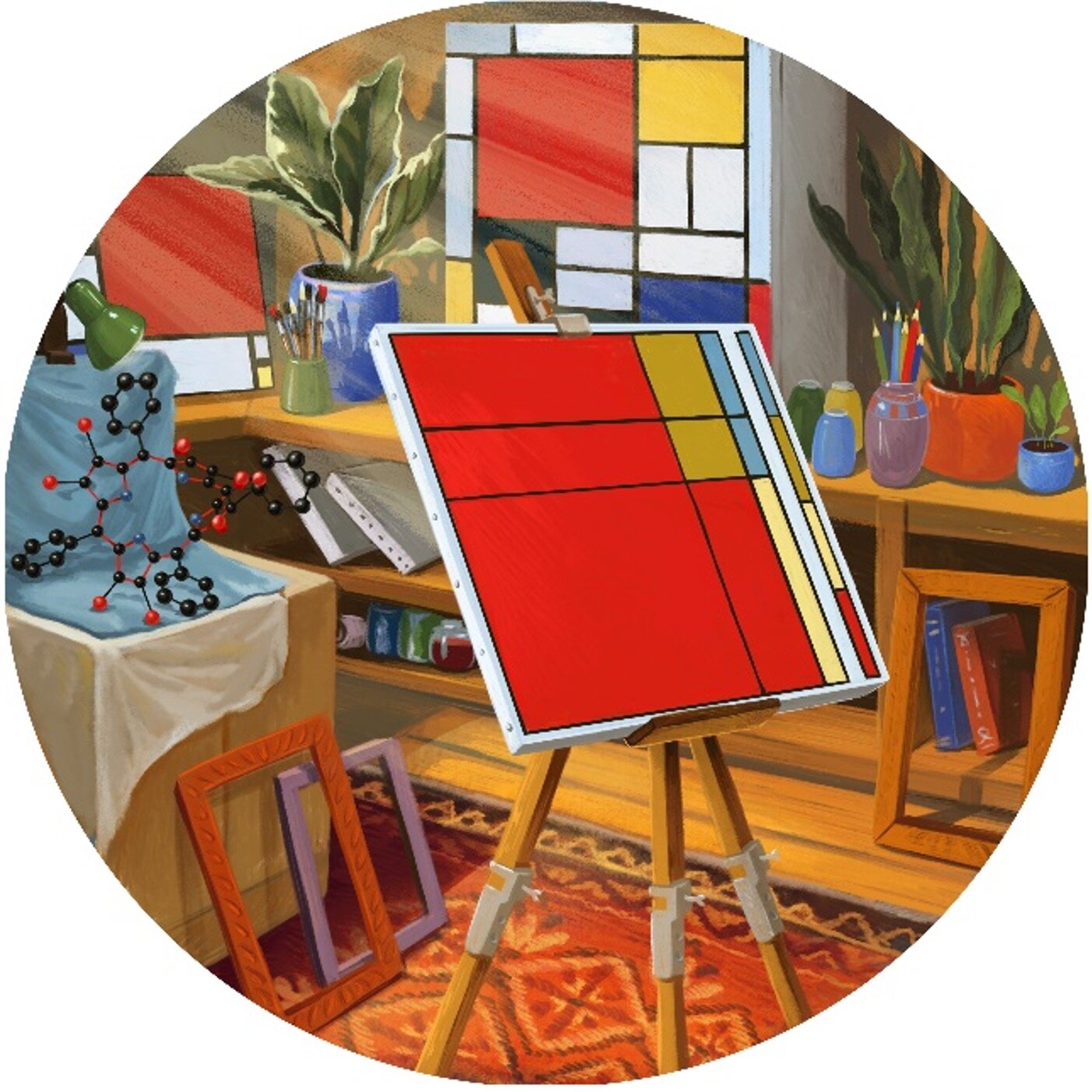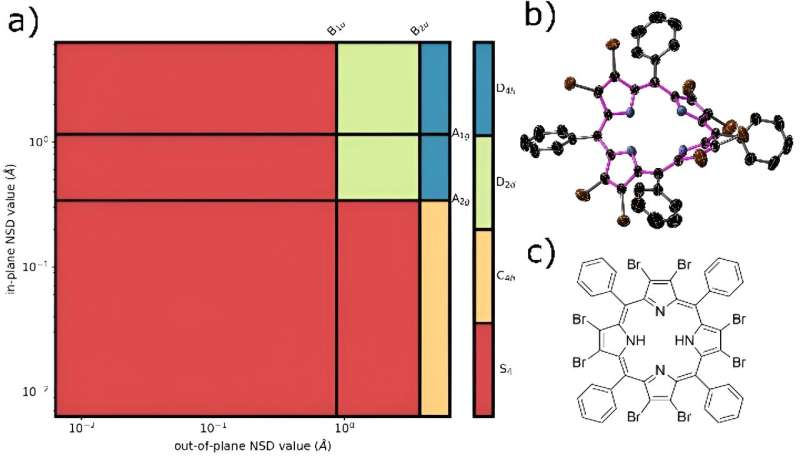Scientists develop computer program that “paints” the structure of molecules in the style of a famous Dutch artist


An example of the visual, Mondrian output of a computer program for a particular molecule. Image credit: Prof. Mathias O Senge, Trinity College Dublin.
Scientists at Trinity College Dublin have developed a computer program that “paints” the structure of molecules in the style of the famous Dutch artist Piet Mondrian, whose beautiful works of art will be immediately familiar to many.
Mondrian’s style, which used blocks of primary colors separated by lines of varying widths on a white background, has been widely copied or used as inspiration in modern culture, but his deceptively simple artworks have also fascinated scientists for decades, finding niche applications in mathematics and statistics.
And now researchers in the School of Chemistry are opening eyes and minds to the beauty of molecular structures and asking new questions about the form and function of the molecules themselves.
Their computer program, accessible at http://www.sengegroup.eu/nsd, creates a Mondrianesque diagram of any molecule. It does so by following an artistic algorithm that combines the laws of chemistry, which describe the 3D structure of a molecule based on its components, with the 2D style of one of the most influential painters of modern times.
It allows scientists to quickly assess and represent molecular symmetry, providing deeper insights than traditional representations. Artists gain a visually appealing image of contrasting symmetry interpretations, hopefully providing inspiration for incorporating scientific ideas into their work.
Mathias O Senge, Professor of Organic Chemistry in Trinity and Hans Fischer Senior Fellow at the Institute for Advanced Study at the Technical University of Munich, is the lead author of an article in the journal applied Chemistryin which this creation is shared with the world.
He said: “We have been working on this project for a number of years, initially as a fun way to represent the structure of a molecule in an artistically pleasing way as a painting in the style of Mondrian. The resulting ‘paintings’ are unique to each molecule and contrast this with what Mondrian and others wanted to achieve with the De Stijl artistic movement.
“Symmetry and shape are essential aspects of molecular structure and the way we interpret molecules and their properties. Very often, however, the relationships between chemical structure and the values derived from it remain obscure. Inspired by Mondrian’s compositions, we represented the symmetry information encoded in the 3D data as color blocks to make it clear how chemical arguments can contribute to symmetry.”

a) “Neoplastic” diagram of the porphyrin core of the classical nonplanar 2,3,7,8,12,13,17,18-octabromo-5,10,15,20-tetraphenylporphyrin (CCDC: RONROB), next to two representations of the same molecule – b) the thermal ellipsoid diagram of the crystal structure and (c) the skeletal model. This porphyrin form is mainly saddled and a little puckered, resulting in S4 Symmetry. Photo credit: applied Chemistry (2024). DOI: 10.1002/anie.202403754
Christopher Kingsbury, a postdoctoral fellow at TBSI who conceived the project, is the first author of the journal article.
He said: “In chemistry, it is useful to have a universal way of representing molecular structure, to ‘blueprint’ how a molecule is likely to behave in different environments and how it will react and change shape in the presence of other molecules. However, a certain degree of nuance is inevitably lost in the process.”
“This concept of increasing abstraction by removing smaller details and attempting to represent a general form is imitated in Mondrian’s early work, and in some ways it is what scientists do intuitively when reducing complex phenomena to a ‘simpler truth’. Thanks to our new approach, very complex science is viewed through an artistic lens, which could make it more accessible to a wider range of people.”
In recent years, Professor Senge and his team have greatly advanced our understanding of porphyrins, a unique class of intensely colored pigments known as the “colors of life.” In one paper, they developed a series of new biological sensors by chemically redesigning these pigments to act like tiny Venus flytraps, catching specific molecules, such as pollutants. And now the new direction where science and art collide could further deepen our understanding of how porphyrins work.
“Great art gives us a new perspective on the world,” added Prof. Senge. “As a pastiche, this art can allow us to look at familiar molecules like porphyrins in a new light and help us better understand how their shape and properties are related.”
“In general, we believe that contemporary initiatives in ‘Art and Science’ require a transformative break with disciplinary boundaries and a fusion into ‘ArtScience’. In our respective fields of activity, there is a subtle interplay between science and art and a blending of both aspects, and this should be a focus for future developments in both fields.”
More information:
Christopher J. Kingsbury et al., Molecular Symmetry and Art: Visualizing the Nearly Symmetrical Molecules in Piet Mondrian’s De Stijl, applied Chemistry (2024). DOI: 10.1002/anie.202403754
Offered by Trinity College Dublin
Quote: Scientists create computer program that “paints” the structure of molecules in the style of a famous Dutch artist (July 12, 2024), retrieved July 12, 2024 from https://phys.org/news/2024-07-scientists-molecules-style-famous-dutch.html
This document is subject to copyright. Except for the purposes of private study or research, no part of it may be reproduced without written permission. The contents are for information purposes only.



/origin-imgresizer.eurosport.com/2024/06/25/3993359-81042888-2560-1440.jpg)